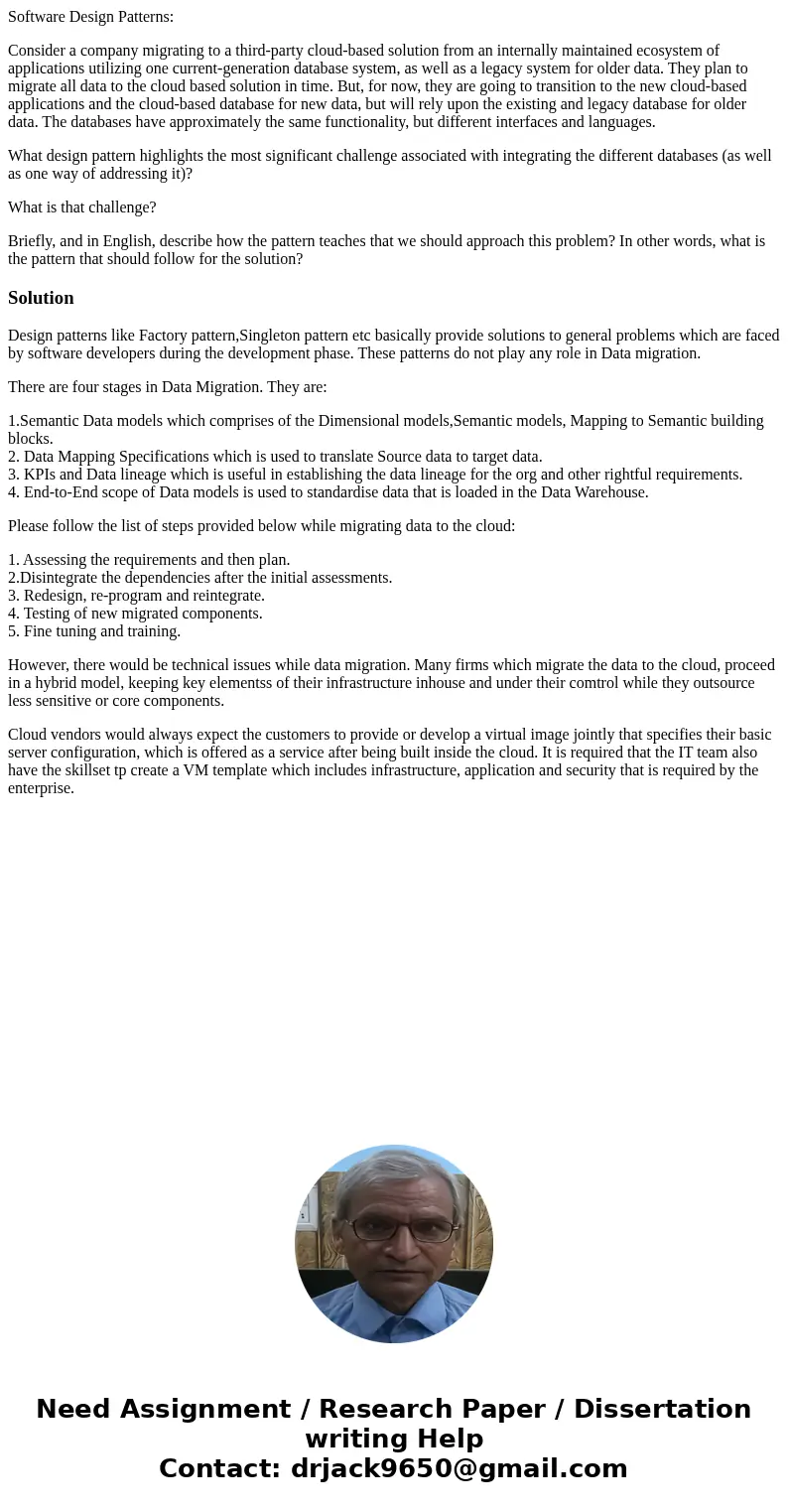Software Design Patterns Consider a company migrating to a t
Software Design Patterns:
Consider a company migrating to a third-party cloud-based solution from an internally maintained ecosystem of applications utilizing one current-generation database system, as well as a legacy system for older data. They plan to migrate all data to the cloud based solution in time. But, for now, they are going to transition to the new cloud-based applications and the cloud-based database for new data, but will rely upon the existing and legacy database for older data. The databases have approximately the same functionality, but different interfaces and languages.
What design pattern highlights the most significant challenge associated with integrating the different databases (as well as one way of addressing it)?
What is that challenge?
Briefly, and in English, describe how the pattern teaches that we should approach this problem? In other words, what is the pattern that should follow for the solution?
Solution
Design patterns like Factory pattern,Singleton pattern etc basically provide solutions to general problems which are faced by software developers during the development phase. These patterns do not play any role in Data migration.
There are four stages in Data Migration. They are:
1.Semantic Data models which comprises of the Dimensional models,Semantic models, Mapping to Semantic building blocks.
2. Data Mapping Specifications which is used to translate Source data to target data.
3. KPIs and Data lineage which is useful in establishing the data lineage for the org and other rightful requirements.
4. End-to-End scope of Data models is used to standardise data that is loaded in the Data Warehouse.
Please follow the list of steps provided below while migrating data to the cloud:
1. Assessing the requirements and then plan.
2.Disintegrate the dependencies after the initial assessments.
3. Redesign, re-program and reintegrate.
4. Testing of new migrated components.
5. Fine tuning and training.
However, there would be technical issues while data migration. Many firms which migrate the data to the cloud, proceed in a hybrid model, keeping key elementss of their infrastructure inhouse and under their comtrol while they outsource less sensitive or core components.
Cloud vendors would always expect the customers to provide or develop a virtual image jointly that specifies their basic server configuration, which is offered as a service after being built inside the cloud. It is required that the IT team also have the skillset tp create a VM template which includes infrastructure, application and security that is required by the enterprise.

 Homework Sourse
Homework Sourse